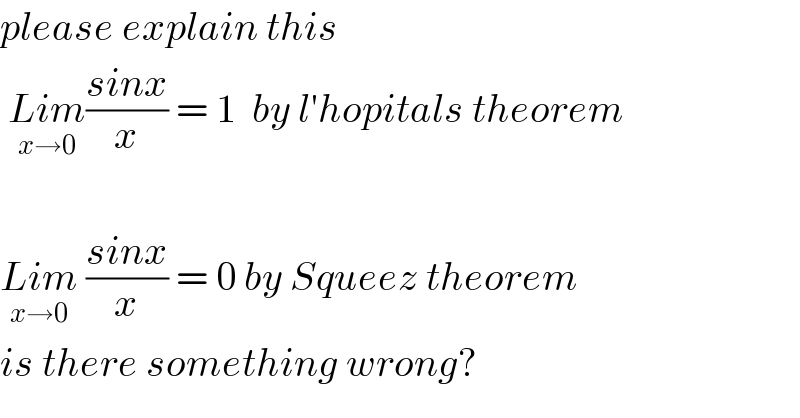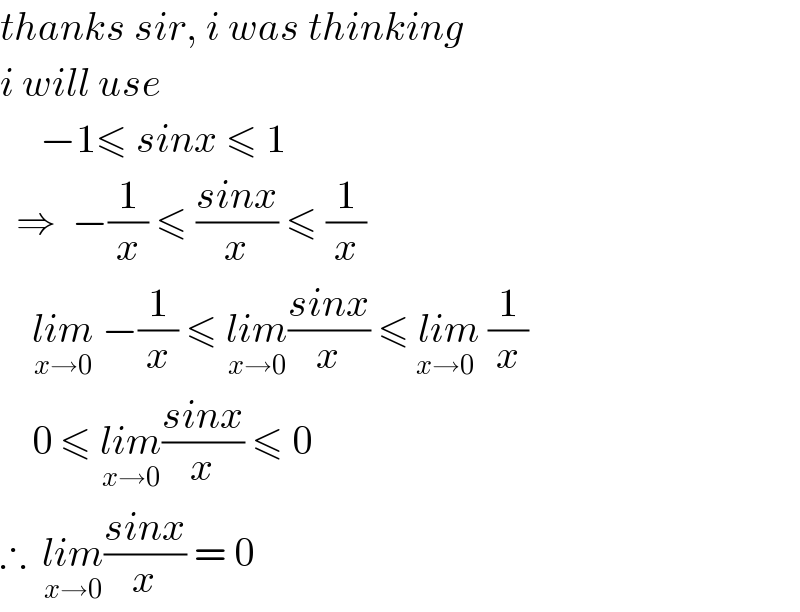
Question and Answers Forum
Question Number 73466 by Rio Michael last updated on 12/Nov/19

Answered by MJS last updated on 12/Nov/19
![lim_(x→0) ((sin x)/x) =1 by Squeeze theorem: draw a quarter circle within x^+ , y^+ [or for 0≤α≤(π/2)] you can see that tan α ≥arc≥sin α arc=α tan α ≥α≥sin α ((sin α)/(cos α))≥α≥sin α ((cos α)/(sin α))≤(1/α)≤(1/(sin α)) cos α ≤ ((sin α)/α)≤1 lim_(α→0) cos α =1 ⇒ lim_(x→0) ((sin x)/x) =1](Q73471.png)
Commented by Rio Michael last updated on 13/Nov/19

Commented by MJS last updated on 13/Nov/19

Commented by Rio Michael last updated on 13/Nov/19

